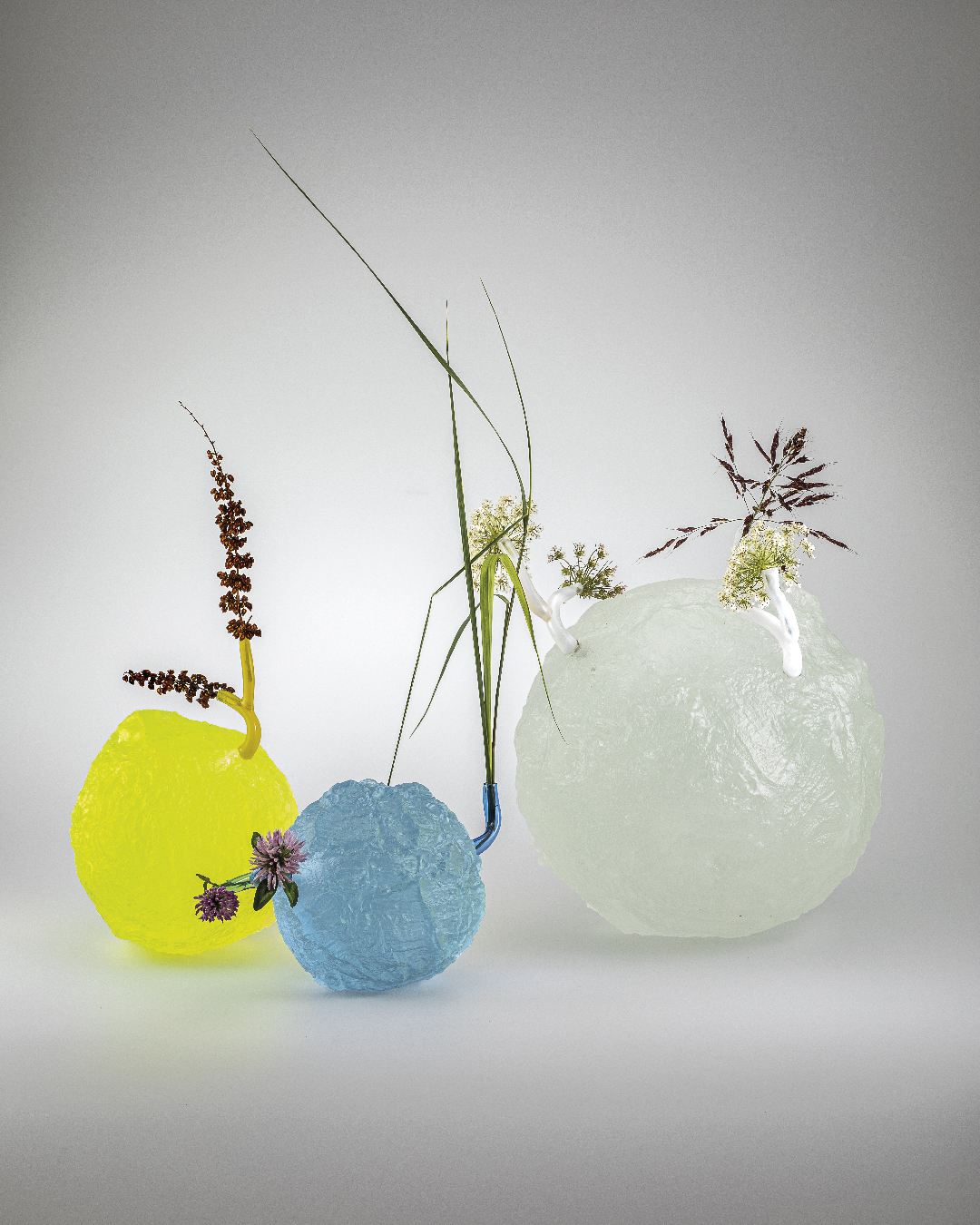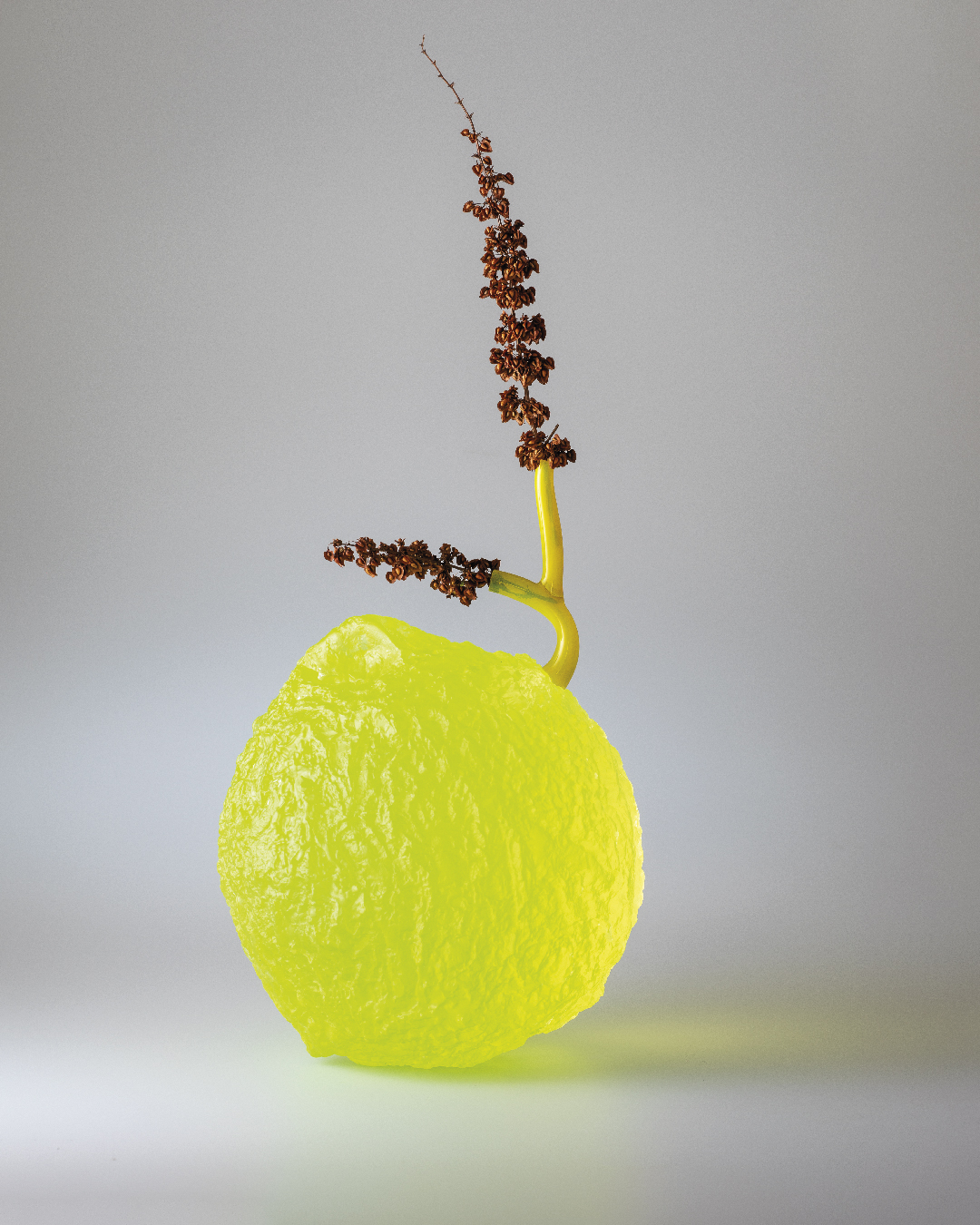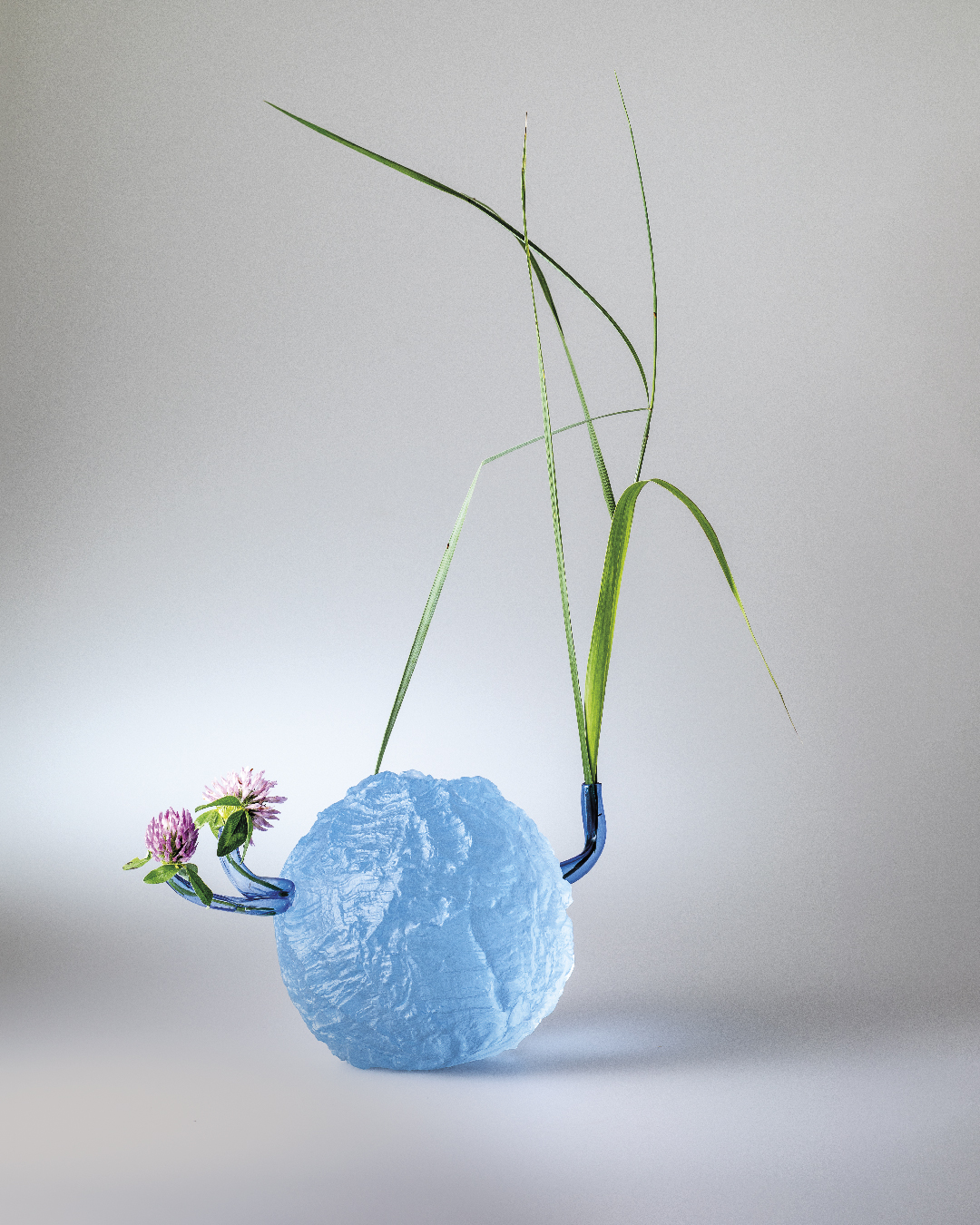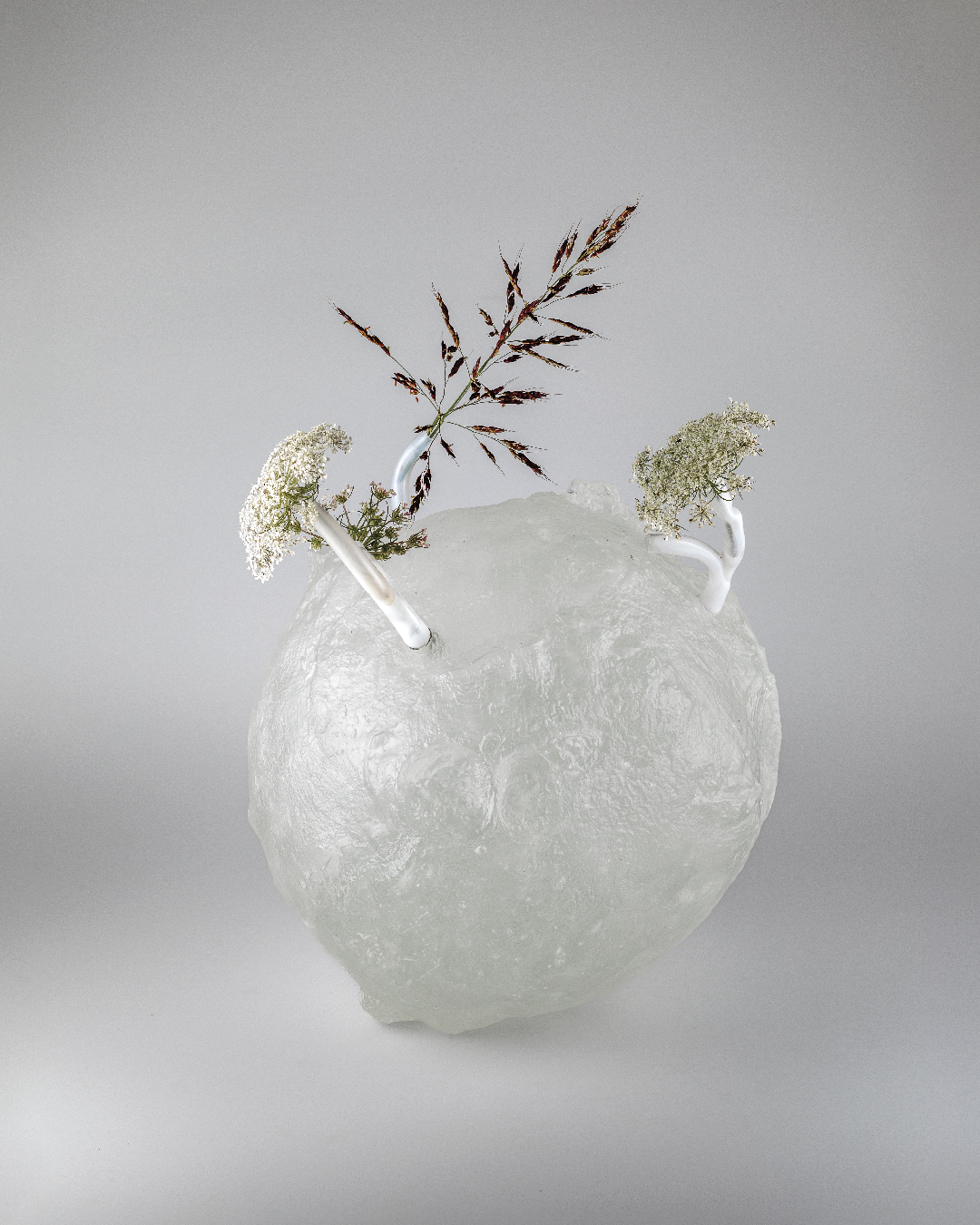Baumwelten
Category:
Date:
8 Settembre 2024
baumwelten
2024
Solid cast in bohemian glass, branches, lamp blown by Maestro Vittorio Costantini in Murano glass, varying dimensions and colours; flowers from the Island of Sant’Erasmo
Ed. 9
Selected by The Venice Glass Week festival and exhibited in the main venue at The Venice Glass Week HUB, Palazzo Loredan September 2024.
■
Ph. Francesco Allegretto
[ENG]
The sacrality of nature and the environment are crucial in Italian author, poet and artist Dino Buzzati’s 1935 novel ‘ll segreto del Bosco Vecchio‘ (The Secret of the Old Woods). The story’s main character redeems his humanity by saving a forest from destruction and connecting meaningfully with the trees and the enchanted creatures that inhabit them.
Much like Buzzati, Janine Thüngen-Reichenbach has always held the sacredness of nature and the survival of magic at heart, her work consistently personifying the alternatively parallel and tangent journeys of imagination and rationality and their quest for recognition and redemption.
The Baumwelten, or tree worlds, fall sweetly in this narrative. Janine turns her inquisitive mind to the observation of trees in order to find explanations to wider ecological themes such as the interconnection between the planet’s flora, and the need for a respectful and peaceful coexistence between humankind and the natural environment in the interest and for the survival of both.
Baumwelten are borne of negative impressions of three different tree barks: a Prunus Armeniaca from Janine’s garden on the ancient Appia Antica, Rome, cast in yellow, the colour of its flower’s pistil; Quercus Suber, the cork oak, also from the Via Appia Antica, in sky blue; and Euonymus Japonicus from her garden in Venice, where its shade falls on the patio like a protective hat, hence its nickname, ‘Berretto del prete’. This sculpture is cast in a candid white reminiscent of the evergreen tree’s beautiful white flowers, adorned in autumn by orange berry-sized fruits.
Stemming from each sculpture are delicate branches created and lamp blown by Maestro Vittorio Costantini, a Burano island native deeply attached to the beauty of Venice, the lagoon and to the abundance and variety of flowers, birds, butterflies, insects and marine creatures they harbour. His meticulous and exquisite creations, delicate and precious microcosms, have garnered him widespread recognition. The wild flowers in the Baumwelten are handpicked by Janine on the island of St Erasmo, a short boat ride away, to further underline the beauty of nature’s interconnectivity.
Janine’s arboreal enquiries express her scientific and philosophical interest in the fundamental role trees play both in the story and the health of humankind. Common sense and scientific research have shown that trees have a calming effect on most people, reducing levels of cortisol and adrenaline, improving moods and giving a sense of peace and security. As Janine has often told me, “Looking at a tree, leaning against it or hugging it makes me feel like Saint-Exupéry’s Little Prince. It’s pure happiness.”
[ITA]
La sacralità della natura e dell’ambiente è un tema cruciale nel romanzo del 1935 di Dino Buzzati “Il segreto del Bosco Vecchio”, in cui il protagonista della storia riscatta la propria umanità salvando un bosco dalla distruzione e stabilendo un legame significativo con gli alberi e le creature incantate che li abitano.
Come Buzzati, anche Janine Thüngen-Reichenbach ha sempre avuto a cuore sia la sacralità della natura che la sopravvivenza della magia. Le sue sculture sono viaggi alternativamente paralleli e tangenti di immaginazione e razionalità, alla costante ricerca di riconoscimento e redenzione.
Le Baumwelten, o mondi arborei, rientrano dolcemente in questa narrazione. Janine rivolge la sua mente curiosa all’osservazione degli alberi per trovare spiegazioni a temi ambientali più ampi, come la complessa interdipendenza tra le varie manifestazioni della flora del pianeta e l’urgente necessità di una coesistenza rispettosa e pacifica tra gli essere umani e l’ambiente nell’interesse e per la sopravvivenza di entrambi.
Le Baumwelten nascono dalle impressioni in negativo di tre diverse cortecce d’albero: un Prunus Armeniaca proveniente dal giardino di Janine sull’Appia Antica, a Roma, fuso in giallo, il colore del pistillo del suo fiore; Quercus Suber, la quercia da sughero, anch’essa proveniente dalla Appia Antica, in azzurro; e Euonymus Japonicus proveniente dal suo giardino di Venezia, la cui ombra ricade sul patio come un cappello protettivo, da cui il suo soprannome, “Berretto del prete”. Questa scultura è realizzata in un bianco candido che ricorda i bellissimi fiori bianchi dell’albero sempreverde, ornati in autunno da bacche arancioni.
Da ogni scultura nascono delicati rami creati e soffiati a lume dal Maestro Vittorio Costantini, originario dell’isola di Burano e profondamente legato alla bellezza di Venezia, della sua laguna e catturato dall’abbondanza e varietà di fiori, uccelli, farfalle, insetti e creature marine. Le sue creazioni delicate e squisite, veri microcosmi preziosi, gli sono valse il riconoscimento a livello mondiale. I fiori selvatici delle Baumwelten, invece, sono raccolti a mano da Janine sull’isola di Sant’Erasmo. Il breve viaggio in barca per coglierli sottolinea ulteriormente l’importanza che Janine dà alla bellezza naturale ed all’interconnessione fra le sue varie espressioni.
Le indagini arboree di Janine esprimono il suo interesse scientifico e filosofico per il ruolo fondamentale che gli alberi svolgono sia nella storia che nella salute dell’umanità. Il buon senso e la ricerca scientifica hanno dimostrato che gli alberi hanno un effetto calmante sulla maggior parte delle persone, riducendo i livelli di cortisolo e di adrenalina, migliorando l’umore e donando un senso di pace e sicurezza. Come mi ha spesso detto Janine: “Guardare un albero, appoggiarmi ad esso o abbracciarlo mi fa sentire il Piccolo Principe di Saint-Exupéry. È pura felicità.”
Francesca de’ Medici
francescademedici.com
BAUMWELT 41°51’35 “N 12°30’16 “E, 2024
Solid cast in blu bohemian glass, ⌀ _13,5 cm – 3,2 kg
This is a negative impression of a Quercus suber from the Via Appia Antica, Rome.
Cork, among other things, is extremely light and floats on water, it consists of 80% gaseous material, its bark can be ‘harvested’ every 9 years.
BAUMWELT 45°26’32” N12°20’28″E, 2024
Solid cast in white bohemien glass, ⌀ 23 cm – 16 kg
This is a negative impression of a Euonymus Japonicus. The evergreen tree itself grows in my garden in Venice, where its shade falls like a protective hat; in Italy this plant is also called ‘Berretto del prete’. In spring it bears beautiful white flowers, in autumn small orange berry-looking fruits adorn the tree.







